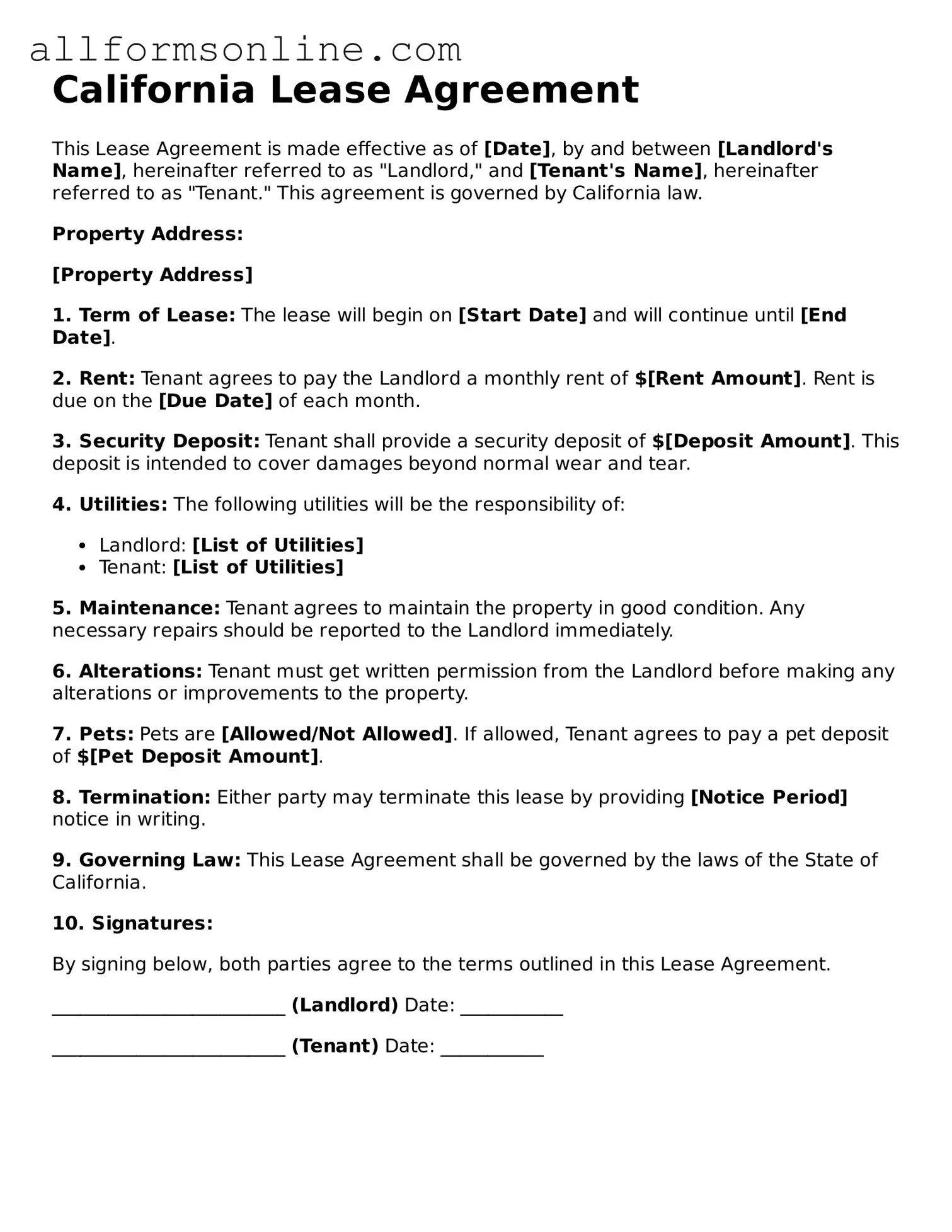What is a California Lease Agreement form?
A California Lease Agreement form is a legal document that outlines the terms and conditions under which a landlord rents property to a tenant in California. This form typically includes details such as the rental amount, payment due dates, lease duration, security deposits, and responsibilities of both parties. It serves to protect the rights of both landlords and tenants by clearly defining their obligations and expectations throughout the rental period.
What should be included in a California Lease Agreement?
A comprehensive California Lease Agreement should include several key components. First, it should specify the names of the landlord and tenant, along with the property address. Next, it should outline the lease term, whether it is month-to-month or for a fixed duration. Additionally, the agreement should detail the rent amount, payment methods, and due dates. Other important elements include security deposit information, maintenance responsibilities, rules regarding pets, and procedures for terminating the lease. By including these details, both parties can avoid misunderstandings and disputes.
How can I modify a California Lease Agreement?
Modifying a California Lease Agreement requires mutual consent from both the landlord and tenant. Any changes should be documented in writing and signed by both parties to ensure clarity and enforceability. Common modifications might include changes to the rent amount, lease duration, or rules regarding property use. It’s important to remember that any alterations should comply with California rental laws. Consulting with a legal expert can provide additional guidance on making modifications appropriately.
What happens if a tenant violates the lease terms?
If a tenant violates the lease terms, the landlord has several options depending on the nature of the violation. Common violations might include late rent payments, unauthorized pets, or property damage. The landlord can issue a notice to the tenant, which may require them to rectify the situation within a specific timeframe. If the issue remains unresolved, the landlord may initiate eviction proceedings. It’s crucial for landlords to follow the legal process outlined in California law to avoid potential disputes or claims of wrongful eviction.
